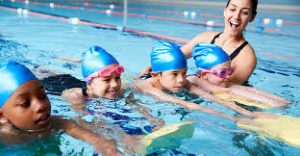Preparing Your Kids for Swimming Lessons: A Parent’s Guide
Swimming is not just a vital life skill; it’s also a fun and engaging activity that promotes fitness and safety. For parents, preparing children for swimming lessons can significantly enhance their experience and help them develop confidence in the water. Here are some effective strategies to ensure your kids are ready for their swimming lessons.
1. Talk About What to Expect
Before the first lesson, have an open conversation with your child about swimming. Discuss what they might do during the lesson, such as practicing floating, kicking, or using swim aids. Address any concerns they might have—fear of the water or new experiences—by reassuring them that it’s normal to feel nervous. Sharing positive experiences or stories about swimming can help alleviate anxiety.
2. Choose the Right Gear
Make sure your child has the appropriate swim gear. This includes:
– Swimsuit: Choose a comfortable, well-fitting swimsuit that allows for movement. Avoid any restrictive styles.
– Goggles: Goggles can help protect their eyes from chlorine and improve visibility underwater, making the experience more enjoyable.
– Swim Cap: If your child has long hair, a swim cap can keep hair out of their face and reduce drag.
– Towel and Water Bottle: Bring a towel for drying off and a water bottle to keep them hydrated.
Allow your child to help pick out their gear to make them feel more involved and excited about the lessons.
3. Practice Water Safety Basics
Before lessons start, introduce basic water safety concepts at home or in a safe environment. Teach them about:
– The importance of never swimming alone.
– Recognizing safe swimming areas.
– How to float on their back.
These concepts can build a foundation for what they will learn in class and emphasize the importance of safety.
4. Create a Routine
Establishing a pre-swim routine can help your child feel more secure and prepared. This might include:
– A healthy snack before the lesson to boost energy.
– A fun activity like watching a swimming video or reading a book about swimming.
– Arriving early to give your child time to acclimate to the pool environment.
Creating a consistent routine can help them transition smoothly into the lesson.
5. Encourage a Positive Mindset
Fostering a positive attitude towards swimming can have a significant impact on your child’s experience. Encourage them by:
– Praising their efforts, regardless of skill level.
– Reminding them that everyone learns at their own pace.
– Celebrating small victories, like mastering a new skill or being brave in the water.
A supportive mindset can help them embrace the learning process and build their confidence.
6. Attend the First Lesson
If possible, attend the first lesson with your child. Your presence can provide comfort and reassurance. Use this opportunity to observe the instructor’s teaching style and understand how the lesson is structured. This will also allow you to ask questions and gather insights that can help you support your child’s learning journey at home.
7. Follow Up After Lessons
After each lesson, talk to your child about their experience. Ask what they enjoyed, what they found challenging, and how they felt. This dialogue can help you gauge their comfort level and identify areas where they may need additional support or encouragement.
Conclusion
Preparing your child for swimming lessons involves more than just ensuring they have the right gear. By fostering a supportive environment, discussing expectations, practicing safety, and maintaining a positive mindset, you can help your child develop not only their swimming skills but also a lifelong love for the water. With your guidance, their swimming journey can be both enjoyable and empowering.






